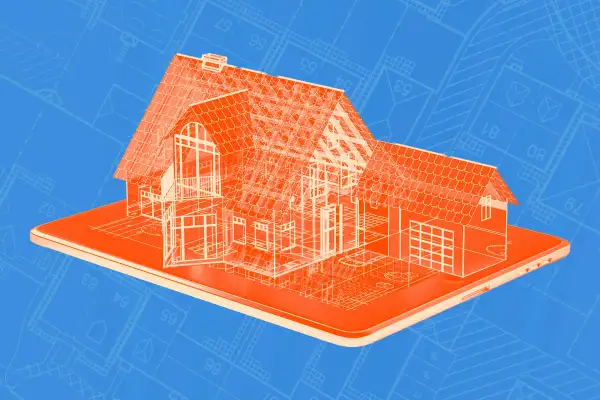To Lower Home Prices, Builders Are Cutting Back on… Hallways?

Homebuyers at open houses tend to get excited about high-end kitchen appliances, a landscaped garden or walk-in closets. But hallways? It’s hard to imagine anyone raving about the floor space connecting one room to another.
Accordingly, designers are increasingly eliminating hallways in new construction homes to make them more affordable.
“Instead of shrinking rooms to reduce overall home size, a common tactic among our architectural designers was to eliminate unnecessary circulation space,” explains a new home design report from California-based John Burns Research and Consulting.
Residential architectural designers are “Tetris-ing the functional rooms together, avoiding wasted square footage on non-functional areas like hallways,” the report says. “In this scenario, fewer interior walls are included.”
The trend is all about creatively maximizing areas that homeowners actually care about — and skipping features that mostly just take up space and add to the overall cost. For example, builders might place a shared closet in between two bedrooms that would otherwise be connected by a wall.
New construction homes are smaller (and cheaper)
Anyone who's gone anywhere near the housing market recently knows homes are too expensive, and there are too few of them for sale. Conditions have only gotten more challenging since the Federal Reserve began hiking interest rates in 2022, simultaneously raising costs for homebuyers (who face higher mortgage bills as a result) and builders (who face higher construction loan rates).
To help solve the affordability gap, homebuilders have reversed the trend of ever-bigger houses. Instead, they've focused more on smaller, lower-priced homes.
A study from the National Association of Home Builders found that 38% of builders constructed smaller homes in 2023, and 26% said they’d go even tinier in 2024. This is what the market demands: “Home buyers are looking for homes around 2,070 square feet, compared to 2,260 20 years ago,” the study explains.
Normally, buyers pay a premium to snag a freshly built house that (theoretically) won’t need renovations. But research indicates that the typical new construction home is now cheaper than its existing counterpart.
According to Federal Reserve reports, the median sales price for brand-new homes in the U.S. was $417,400 in May, versus $419,300 for existing homes. Median prices for new construction homes are also down significantly from their all-time high of $460,300 in October 2022.
Bear in mind that more than 90% of homes sales are for existing houses, according to the National Association of Realtors. So the pricing data for new construction homes is based on a much smaller sample size. What’s more, new homes tend to be built in areas where land is readily available and more affordable, rather than cities where real estate costs a fortune and the best plots are already developed.
The most obvious reason that existing homes cost more than new construction “is the continued rise of existing-home values due to inventory scarcity,” Cliff Johnson, vice president of new homes and rentals at Realtor.com, said in a recent post. At the same time, construction companies are reacting to the market and emphasizing design choices that decrease costs.
“Builders have seen the affordability issue on the horizon for quite some time, so many have adapted and responded with homes that are more reasonably priced,” he added.
More from Money:
Summer Could Finally Bring Some Good News for Home Buyers, Experts Say
8 Best Mortgage Lenders of 2024
Why States With No Income Tax Aren't as Affordable as They Seem


